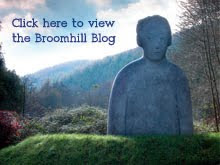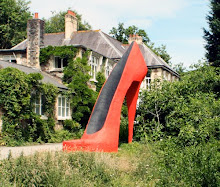Monday 24 March
Ordered wood from Truro Sawmills who said it might take 2 weeks! Sitka Spruce seems to be the cheapest. (It’s what the earlier “gill sculpture” was made of.) They are able to cut the rectangular section wood pieces on a diagonal along the length to give me the wedge shape that I need.
Friday 28 March
Was able to collect wood! Much greater volume that I had anticipated. I could just lift each wedge which resembled a railway sleeper! There are 26 pieces. Took two car loads on a one and a half hour round journey. (Car has been creaking ever since.) Loaded wood into my small and now crowded garage and numbered each piece 1 to 26. Began marking out. Tried cutting down the length of a piece with my hand saw. Made no impression after 15 minutes! Wondered about buying a bow saw, a reciprocating saw or hiring a chainsaw.
No-one can hire me a chainsaw, but discover I can borrow one from Ian at the museum.
Monday 7 April
Begin making cuts with Ian’s chainsaw. Find it will do the job but slowly. Decide to buy my own chainsaw and find that with a new blade it cuts the wood (almost) like butter. Very pleased! Make good progress.
8-11 April
Work solidly to shape all 26 wood pieces using chainsaw and hand held electric planer. Mark out each piece of wood while it is on the bench. (Hard work moving each piece so need to do this as little as possible.)
Placed two pieces of plywood against the garage door and marked out the full size of the sculpture. Made a decision to make an egg shape rather that complete sphere and drew this on the ply. An egg shape will allow the star points to come down around the body of the sculpture more. Cut a pattern from one side of the ply and screwed guides to it so that it rested in the same place on each piece of wood.
Needed to make a prop to hold each wedge up a bit on the bandsaw table so that the cut was at right angles to the centre line of the end of the wedge. This would be screwed to each wedge prior to cutting.
Had a conversation about treating the wood with Mike. He suggested a boatbuilder’s oil called Varnol which can be applied in just one day.
Saturday 12 April
Loaded most pieces into the car and drove to Museum workshop at Ponsharden where I was able to borrow the large bandsaw. Managed to cut out 17 of the 26 curved pieces in 3 hours. Quite a lot of “waste” wood off-cuts. These could make a different sculpture one day so they will be saved. I could have ordered wood in a different shape in order to avoid this waste and indeed tried to work this out but it didn’t look feasible. If I did this again I would find a way of having less waste – hence less cost.
Had a conversation with Richard a master wood carver, about the shrinking of the wet wood over time. The problem is how to avoid the wood splitting up as a result of being held in position too rigidly. Have an idea about how to use the screw bolts so that this can happen.
The wood is in the back of the car now – too tired to unload it!
Sunday 13 April
Completed the cutting of the curves on the band saw. Another two hours of work. Unfortunately I cut part the way through a screw and blunted the blade. The blade got hot and welded itself to the rubber on the two drive wheels! Half an hour for Mike to sort this out!
Had to store all the off-cuts in the garage. They take up a lot of space.
Very satisfied with the weekend’s progress.
Tuesday 15 April
Went to see Henry (Estates) to let him know how I’m progressing. I don’t want to suddenly spring this thing on people so the more who know about it the better as it progresses. Henry showed me where the water and other mains pipes are under the lawn so I don’t dig them up.
Transferred all the wood pieces to the workshop in the Marine school. Again, slightly embarrassed by the size of it all and the amount if solid wood it is consuming. Was there a more economical way to do this? Had a chat with Jane who was supportive too. Feeling better about it all.
Started to glue the pairs together. Found they became quite heavy like this but just manageable. I think I need the glue to fix down the feather-edge on the top piece so worth doing. Found it best to “clamp the pieces together by screwing them, though did use G cramps to secure ends. Started to consider which bolts to use and think I will go for weatherproof coach screws from Screwfix at a total cost of about 28 pounds!
Wednesday 16 April
Spent the day in the workshop gluing the remaining pairs together. The gap filling Balcontan glue seems to be working well.
Started to drill holes for the joining bolts. This requires a large 32mm access hole followed by a 10mm hole for the shaft of the bolt then a 6 mm pilot hole. All these need to be drilled in the right direction so I will use a very long drill bit as a direction finder. I need an extension for the 32mm spade bit in order to reach the required depth. I’m working on intuition as regards the method of bolting the sections together. Five 5 inch bolts joining each section should do it??????
Also started thinking about the support posts and the angle at which these might be. Have left sections 25 and 26 unglued so that I can cut these for the posts more easily. I have also left the last section at the top unglued because this will almost certainly need trimming so that it fits in.
Thought a bit more about how this thing will go together on site:
Knock metal post holders in as a foursome.
Knock already shaped wooden posts in and bolt together laterally.
Bolt number 1 / 2 section to the posts on the side.
Bolt number 25 / 26 pieces to number 1 / 2 and the posts
Bolt number 23 / 24 section to posts
Sections may need support at the front as they are added
Sculpture will be at its most vulnerable to collapse when half the bottom has been completed. The half finished construction will almost certainly need support until the last (keystone) piece is put in.
Thursday 17 April
Continued to drill holes for bolts. Realised that the orientation between each slice (the angle at which they are bolted together) is critical. If each slice is not parallel to its neighbour then the top piece will not join the whole together! Talked to John about this and decided to build a semicircular former on which to construct a number of slices at once. This would ensure the slices follow a circular core of 14 inches and remain parallel.
Discussed with John various methods for fixing the sculpture to the ground. Including the 4 fence post idea as well as using a metal plate bolted to the bottom of the sphere. Lots of sketches made.
Friday 18 April
Spent the rest of the day drilling holes for the bolts. Time consuming and labour intensive work. Discovered after drilling 4 slices that there is a more accurate way of doing this by drilling from the face from which the bolts emerge.
Have to be very careful that the access holes for the slices are drilled from the correct side so that sculpture can be assembled correctly on site. Made a drawing to aid this process.
Find that I am becoming strongly in favour of a metal plate bolted to the bottom of the structure and then bolted to a plate anchored in the ground. This would avoid cutting a large piece out of the structure to accommodate the fence post. It means the sculpture could change its tilt in the future by merely moving the position of the plate. Hope John can make a strong enough plate and ground spike. Will make drawing for him next week.
Notice the wood is beginning the crack at it dries in the warm workshop atmosphere. Will have to linseed oil all pieces first thing next week to slow this down.
Tuesday 22 April
Considering the wooden fence post method of fixing the sculpture to the ground because I can control all of this. Post spikes and fence post will cost about 30 pounds.
Spent a full day in the workshop. Completed all the screw holes – 65 of them drilled with 4 separate drills. Linseed oiled about 5 of the slices before the litre ran out. Began belt sanding each slice ready to fit these together.
Fitting together involves matching each slice on its outer edge, ensuring the straight edges are parallel then drilling the pilot holes for the coach screws. Only then can I plane and sand each outer slice to match its neighbour. Can only do half of the sphere at a time on the table top. See the sketchbook for how I’m going to do this.
Decided I should use the largest washers possible so that the bolt head does not destroy the wood inside the access hole.
Talked to John about the method for fixing the sculpture to the ground again. Considering a fabricated metal plate again. John can do the welding if I can source the metal.
Friday, 14 May 2010
Subscribe to:
Post Comments (Atom)




No comments:
Post a Comment